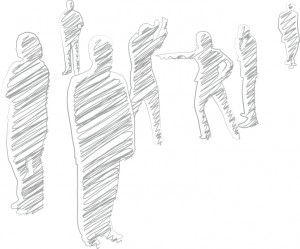There are different types of teams, and they all have their strengths and risks. We have ideas and offer advice for these teams.
THE "1 HEAD" TEAM
These teams have a "leading" member who guides the other team members as a kind of project manager.
Strengths: Everyone runs in the same direction (that of the "project leader"), but in the worst-case scenario, they may also run into the nearest wall.
Risks: If this leadership role of the team is removed, the team usually reacts in an uncoordinated manner. Self-organization is something new!
Helpful: Ensure trust so that the silent ones speak up. This will initiate the change from a "one-head" team to a self-organized team.
 THE "SEVEN TEAMS IN ONE TEAM" TEAM
THE "SEVEN TEAMS IN ONE TEAM" TEAM
Each team member works in isolation as a specialist in their own field and has no knowledge of their colleagues' topics.
Strengths: Each team member has extensive knowledge in their specialist area.
Risks: If the "truck factor" strikes, the team cannot deliver.
Helpful: Agile working methods support the distribution of knowledge among the other team members.
 THE "NON-AGILE PERFORMER" TEAM
THE "NON-AGILE PERFORMER" TEAM
The teams may not be agile, but they are highly efficient.
Strengths: The teams are already in a very effective working mode.
Risks: See no need to engage with new ways of working.
Helpful: Involve teams in the design of scaled agile working methods and benefit from their experience!
![]() THE "WE-ARE-AGILE" TEAM
THE "WE-ARE-AGILE" TEAM
These teams already have initial experience with agile working methods.
Strengths: Experience can be shared with colleagues.
Risks: "Scrum-but" working methods can lead to bad experiences and "scorched earth" ... A vicious circle!
Helpful: Break the vicious circle with consistent agility and make good experiences possible again!
 THE DYSFUNCTIONAL
THE DYSFUNCTIONAL
"NOTHING WORKS HERE" TEAM
Lack of trust, lack of motivation, fear of
conflicts, no assumption of responsibility, no focus on results.
Strengths: The causes are often known - good starting point for change!
Risks: If the causes are not addressed, the team will reach a point where it can no longer deliver.
Helpful: Regular retrospectives and consistently pursued measures.
This text is taken from the wibas customer magazine.


Write a comment